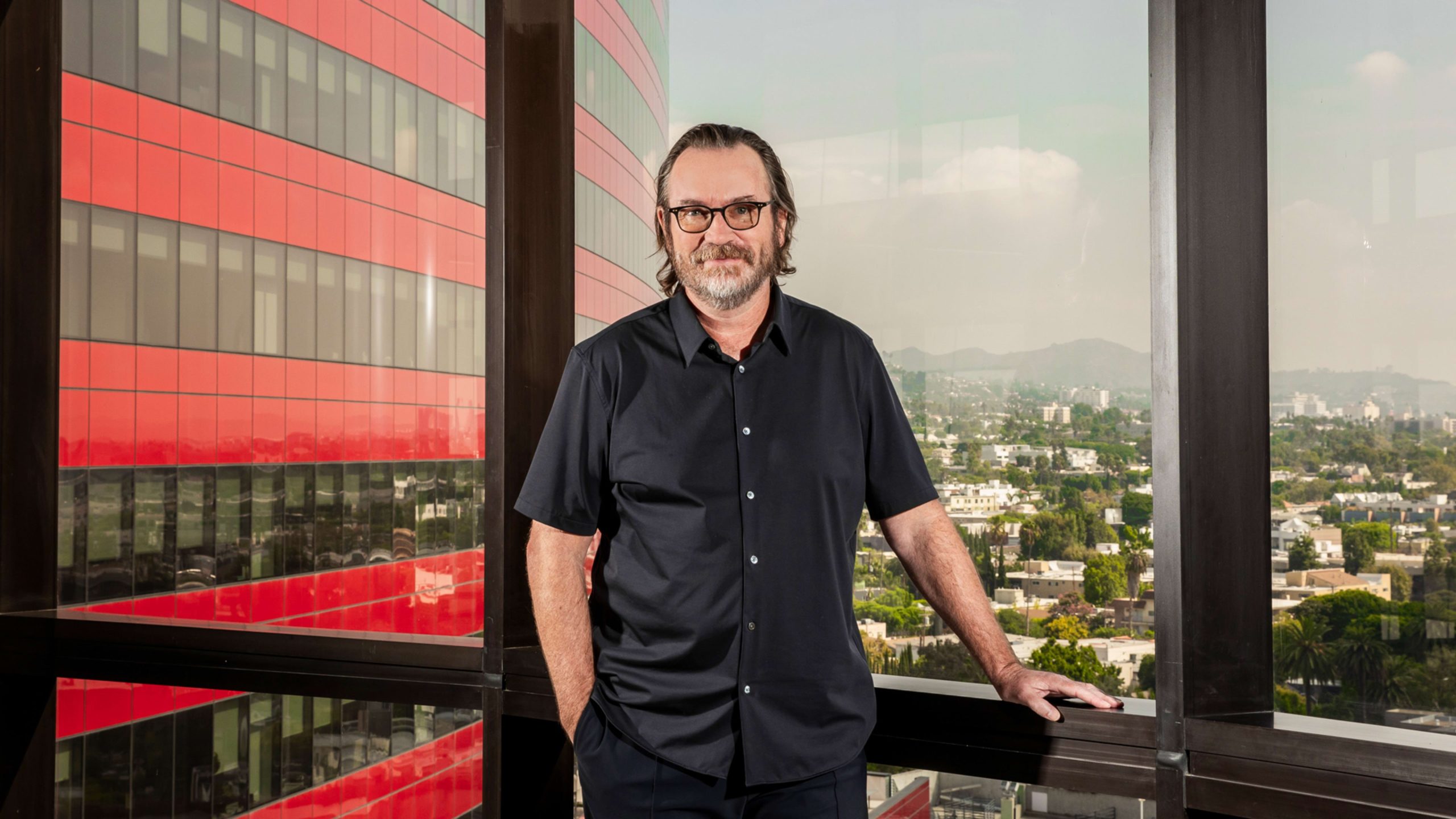Paramount Streaming’s CEO launched Pluto TV 10 years ago. Here’s what he thinks about the future of free streaming
Paramount Streaming’s CEO launched Pluto TV 10 years ago. Here’s what he thinks about the future of free streaming
Tom Ryan spoke with ‘Fast Company’ about the major differences between free and paid streaming models, and why so many viewers are embracing both.
As streaming services continue to raise prices, customers have turned to more affordable options. Free ad-supported TV (or FAST) allows viewers to watch a variety of programming from TV shows and movies to live news on any device for free—but the trade-off is that you have to watch commercials. It’s a market that is growing quickly.
Over the past several years, Paramount’s Pluto TV, Fox’s Tubi, Amazon Freevee, The Roku Channel, and others have emerged as some of the popular FAST services among consumers. According to Samba TV’s State of Viewership report from last year, one in three U.S. viewers subscribe to FAST services. Global revenue from TV series and movies distributed on FAST platforms is expected to reach $18 billion in 2028, according to reports from Digital TV Research.
Tom Ryan, CEO of Paramount Streaming, was one of the first pioneers in FAST when he cofounded Pluto TV back in April of 2014. Ten years later, Pluto TV—which Ryan sold to Paramount (then ViacomCBS) in 2019—has become a billion-dollar business. It has 425 global media partners and has expanded into an international brand that spans four continents and more than 35 markets.
Last year, Paramount Global announced that the service hit 80 million monthly active users. While Pluto TV has seen growth, Paramount has been in the spotlight for numerous other reasons in the past year, especially as it looks for a potential buyer amid rumors of Skydance Media being the recent company reportedly looking to make a deal.
While Ryan did not speak to the merger-and-acquisition speculation, he spoke with Fast Company about the relationship between FAST and paid streaming, and why Pluto TV isn’t getting into original programming. This interview has been edited for length and clarity.
What has changed since Pluto TV got started?
When we launched in 2014, it really was a completely different era for streaming. We launched it with this idea that there was so much great online video, but it was hard to find good stuff on YouTube. Their algorithms and recommendations weren’t what they are today, which I think are now excellent. You really had to hunt and peck your way around the internet to find good online video. So, that’s the product that we launched with, but it was just an MVP—a minimum viable product—where we essentially learned that if you curate short-form, online videos into a thematic cable-like channel and deliver them on web and mobile, you could get people to watch.
That was good, but the stark truth set in when we realized people would not lean back and watch for the amount of time we needed them to watch for when it was short-form content stitched together. They would also not do that on web and mobile, so we needed to pivot. We did something that looked a lot more like—ironically—traditional TV, which was long-form, more premium-television-like programming, and then delivered it to the living room on the actual television through connected TVs.
Eighteen months later, we launched a product on Roku, and aggregated enough content from traditional TV suppliers that we were able to launch something that looks more like what Pluto TV looks like today. Not nearly as good, but something in the direction that was more like the Pluto TV 2.0.
Why do you think FAST is really taking off now?
I think it’s a universally and globally appealing product. Free television, who doesn’t want that? Sure, you pay with a little bit of your time for watching advertising, but even in paid streaming for most services, there’s an ad-supported tier of paid streaming. But here, you get a product that feels familiar, is easy to use, if not better, frankly, than traditional TV in terms of its UX and its usability. You get to dive right into great well-known content all for free, so it’s just a highly appealing product. And it’s complementary to paid services.
We’ve seen that the average Pluto TV user has several paid services based on our research, so this is not substitutional; this is complementary. They go to their paid services for certain content, and Pluto TV is a complementary product that they use for their overall entertainment usage; and the same is true with cable TV. About half of our Pluto TV users have a cable TV subscription, but they find interesting channels and lots of great content that is easy to access all for free. So why wouldn’t you add that to your streaming diet? It’s a great way to enhance your entertainment offering at home and . . . at no incremental cost.
Can you speak to the differences between free, ad-supported streaming television on Pluto TV and paid streaming on Paramount+?
It’s actually quite different. Paramount+ is primarily a first-party content service, meaning that—whether it’s our cable network studios or broadcast network, CBS, their studio, or Paramount Pictures, our movie studio—the vast majority of our content on Paramount+ comes from our internal studios; whereas with Pluto TV, it’s primarily a third-party content service.
We have well over 400 partners on the content side for Pluto TV. Paramount is an extremely important partner and it’s a strategic advantage for us to have Paramount as our parent company because we have privileged access to content that other FAST services don’t. But at the same time, Paramount is just one of those partners, and therefore Pluto TV benefits from the breadth and depth of those hundreds of content partners, but also the fact that it has privileged access to content from Paramount.
The business models are just so different. There’s no coincidence that Pluto TV began as a startup, because it was a much more capital-efficient business model than the paid streaming model. We pioneered the 50/50 rev share model for content and that is prolific today among most of the FAST providers. But with Paramount+, there’s significant fixed costs, which we are well on our way to exceeding, but it’s a different model. You commit billions of dollars of content expense per year in order to acquire and retain those customers. Less than three years after launch, we have close to 68 million subscribers. We’re well on our way to exceeding that threshold, but at the same time, it’s just a very different business model.
Earlier you spoke to how FAST and paid streaming can serve as supplements for each other. How do Pluto TV and Paramount+ complement each other, and how is the company optimizing both services’s offerings?
By having a leading FAST service and a leading, paid-streaming service, we are addressing the broadest possible streaming market. If you think back to traditional TV, whether it was free broadcast or paid cable TV, by being able to offer both—just like we do with CBS and our cable network—you are able to address the broadest possible television consumer.
The same is true here in the streaming market with Paramount Streaming. We have Pluto TV leading the free-to-streaming market to 35 markets, a profitable, billion-dollar-plus company, since we announced that three years ago. And it allows anybody with an internet connection to have a free streaming-television service. And at Paramount+, we have very attractive pricing for the range of different offerings: from Paramount+ ad-supported for $5.99, you get the NFL, you get the whole range of Paramount content, as well as all the originals that we make. For $11.99, you’ve got Paramount+ with Showtime with no ads, and that has even more content. It’s a fantastic offering. FAST and paid streaming are complementary, but by offering both of those, we are able to offer really the range of what consumers desire in streaming all under one roof. Then there’s a bunch of synergies that we also see from having both companies under one roof.
We can also cross-promote the services and take the best of each of the learnings and the features and the technologies from each of the services and apply the other. On Pluto TV, we regularly have channels that show some of the Paramount+ original programming that would ordinarily only be available to the Paramount+ subscriber for free. We don’t show all of that content, but we show enough of it to get people interested and engaged with the programming and to attempt to upsell them to Paramount+, and we see a huge brand-awareness lift.
We also see significant upsell engagement where people actually learn about certain shows and then subscribe to Paramount+ because they watched it on Pluto TV. There’s also other things that we do. For example, we have Pluto TV-style linear channels in the Paramount+ product. The amount of engagement we get from those viewers of those channels is huge. There’s a variety of other things that we do to take the best-of-breed technology from Paramount+ and apply it to Pluto and vice versa.
Being able to address the whole scale of streaming, the whole market of streaming from free to ad-supported paid to premium paid, and take the best learnings and cross-promotional opportunities between the two services, makes one plus one equal three.
Are there any challenges for Pluto TV and Paramount+?
There’s a lot of folks out there who believe that they should be doing original content for FAST. I fundamentally disagree with that. I’d never say never, but ultimately, what works well for FAST is big franchises, high volumes of episodes, and content that doesn’t necessarily need to be watched one episode before the other, so you don’t need to watch episode one before you watch episode two. Those are self-contained episodes.
For crime and procedural, CSI and NCIS work well. Game shows like Wheel of Fortune and Jeopardy! work great. Sitcoms [are] just pure gold on FAST. But when you make originals, 5 out of 10, or even 9 out of 10, are probably not going to be a huge hit. The cost of making an original plus the significant marketing expenses—FAST monetization just doesn’t pencil out in a way that subscriber monetization does.
How do Pluto TV and Paramount+ plan on continuing to grow?
There’s huge headroom here in the U.S. I think we’re just scratching the surface when it comes to the FAST opportunity in the U.S. I think a lot of people still don’t fully appreciate what an amazing complementary value they get from a FAST service like Pluto TV to complement whatever it is that they’re doing for their other TV viewing, whether that be paid streaming or whether that be cable TV.
Globally, I believe that we have a huge opportunity. We’re in 35 markets, but there’s a lot more to come in terms of the global opportunity. In Canada, we launched with Corus Entertainment, which is one of the major media companies in Canada, and Pluto TV there is totally on fire and we are already rivaling the U.S. in terms of performance metrics, having launched just 15 months ago. So, seeing things like that just reinforced for me how big the global opportunity is.
ABOUT THE AUTHOR
(7)



